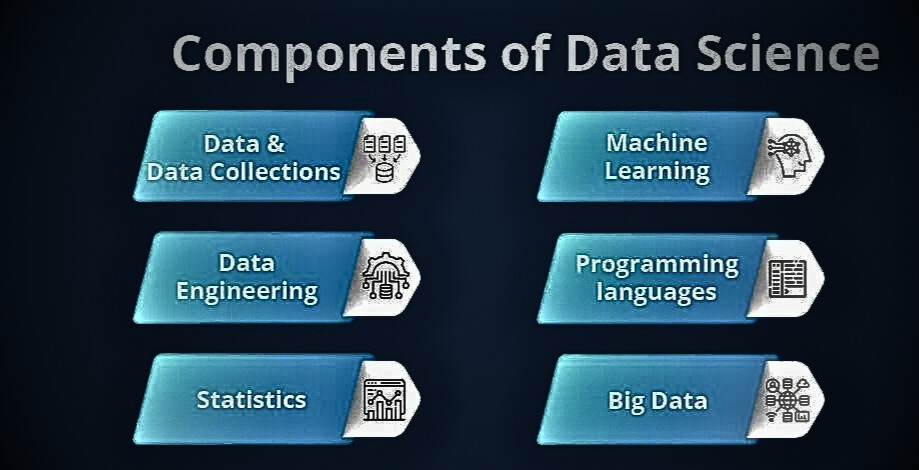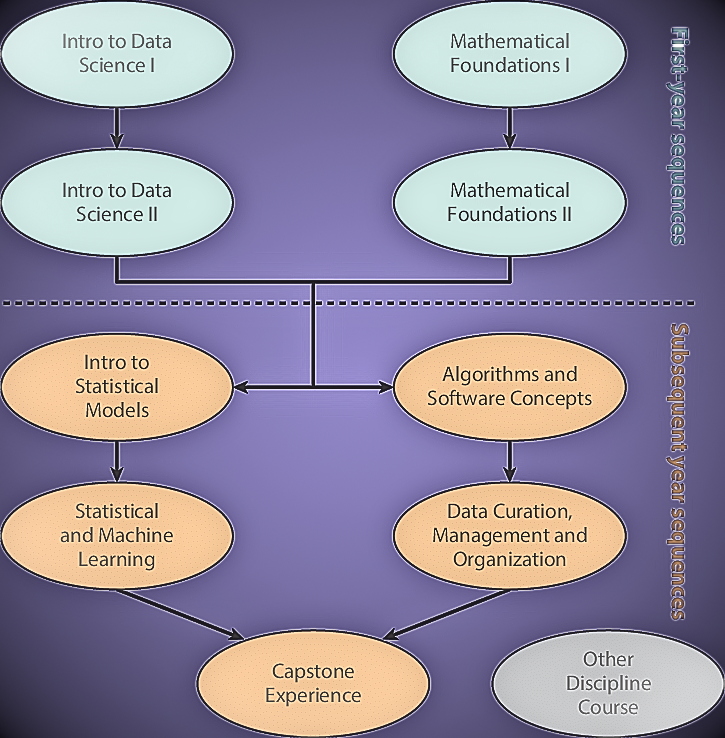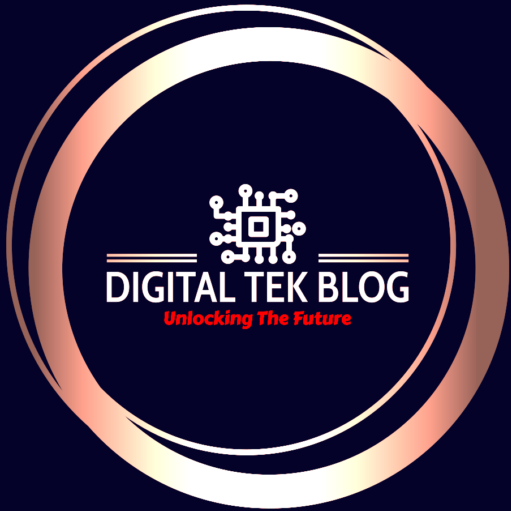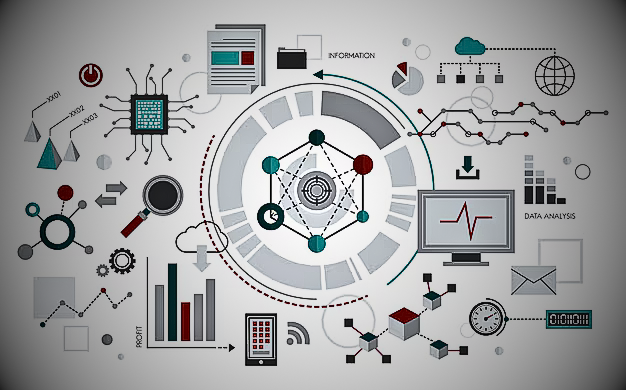Before discussing data science fundamentals, let’s discuss the basic definition of data science.
In the data sector, the era of big data has arrived, with organizations handling petabytes and exabytes of data. Until 2010, data storage was very difficult for the industry. Now that popular frameworks like Hadoop have solved the storage problem, the focus has shifted to data processing. Data science plays a big role here. Since data science is evolving in many forms, you should prepare for the future by learning what data science is and how you can add value to it.
What are the data science fundamentals?
Data science is a field that combines various techniques and tools to extract valuable insights from data. It’s like being a detective and solving mysteries hidden in information. Here is a description of its essence:
- Data is the raw material. Data science deals with data in various formats, such as numbers, text, images, and videos.
- Uncover the secrets: Data scientists use programming languages, statistics, and machine learning to clean, analyze, and interpret this data.
- Discovering stories: By analyzing data, data scientists uncover patterns, trends, and relationships that are not immediately obvious.
- Knowledge sharing: These insights are communicated effectively through clear visualization and reporting.
Simply put, data science is the transformation of raw data into actionable knowledge that can be used to make better decisions in a variety of fields, from business and healthcare to marketing and scientific research.
Data science is the science of analyzing raw data using statistics and machine learning techniques for the purpose of drawing conclusions about that information.
Simply put, data science includes:
- Statistics, Computer Science, and Mathematics
- Data cleaning and formatting
- Data visualization
Core Components of Data Science
Data science is an interdisciplinary field that uses scientific methods, processes, algorithms, and structures to extract information and insights from structured and unstructured information.
This article explores the essential elements of data science, from data collection to programming languages, and highlights the key pillars that shape modern analytics.

Main Components of Data Science
1. Data and data collection
The first step in any data science endeavor is to obtain the datasets needed to solve a business problem or answer a specific question. Structured data and unstructured data are two major categories of data.
Structured data
Structured data refers to information that exists in fixed fields within a database or spreadsheet. Examples include relational databases, Excel files, CSV files, and other tabular datasets where each data element has a predefined type and length. The standard ways to access structured data are:
- Connection to a relational database such as MySQL.
- Load Excel sheets and CSV files into a notebook, like Jupyter or R Studio.
- Connect to structured data sources using APIs.
- Access to data warehouses such as Amazon Redshift and Google BigQuery.
Unstructured data
Unstructured data refers to information that does not fit into a predefined data model and whose elements do not have specified data types. This includes text documents, PDF files, photos, videos, audio files, presentations, emails, log files, web pages, and more. Access to unstructured data further complicates matters. Standard methods include:
Data scraping and crawling techniques are used to extract data from websites through libraries like Scrapy and Beautiful Soup.
- Enhance data using optical character recognition on scanned documents and PDFs.
- Speech-to-text translation of audio and video files using APIs such as the YouTube Data API.
- Access to your email inbox via IMAP and POP protocols.
- Read text files, Word documents, and presentations stored in your internal environment.
- Query NoSQL databases, such as MongoDB, that contain unstructured document data.
Once access to the required datasets has been established as per access rights protocols and regulations, data extraction can be initiated using appropriate programmatic techniques such as SQL, APIs, or web scraping techniques.
2. Data Engineering
Data engineering designs, develops, and manages infrastructure to store and process data efficiently.
Real-world data received from businesses can be more consistent and complete. Data cleaning and preparation are important steps taken to transform raw data obtained from various sources into high-quality datasets that are ready for analysis.
Common data issues that need to be resolved include:
- Missing values indicate problems with data capture or extraction.
- Invalid data types, such as text, occur when a number is expected.
- Duplicates may distort the analysis.
- Data discrepancies due to mergers, system migrations, etc.
- Outliers that deviate from the expected statistical distribution.
- Apply data normalization techniques
It is essential to proactively find and correct insufficient data before analysis to ensure accurate insights and the right models. During cleaning and preparation, it is also important to preserve meta-information about how the raw data was transformed into an analyzable format. Preserving data provenance ensures transparency of analysis for future reference.
Once the data has been collected, the next component is data analysis and modeling to uncover important results.
3. Statistics
Statistics is a fundamental pillar of data science, providing a theoretical framework for analyzing and interpreting data. Key components include ways to summarize and interpret data, inferential techniques to draw conclusions, and hypothesis testing to validate insights.
In data science, statistical methods help uncover patterns, trends, and relationships within datasets, facilitating informed decision-making. Descriptive statistics reveal the central tendency and distribution of data, while inferential statistics enable generalization and prediction. A comprehensive understanding of statistical concepts is essential for data scientists to extract meaningful insights, validate models, and ensure results are robust and reliable in data-driven decision-making processes.
Statistical models apply quantitative techniques to data to show key features, patterns, and trends. Some examples are:
- Probabilistic models that predict the probability of events.
- Regression analysis is used to model relationships between data variables.
- Graphing trends over time using time series analysis.
- Simulation modeling that mimics real-world events.
4. Machine Learning
Machine learning serves as an essential component in the broader field of data science and represents a paradigm shift in analytical methods. This involves taking advantage of advanced algorithms that allow systems to learn and adapt autonomously based on data patterns without explicit programming. This innovative feature enables meaningful insights, predictive modeling and informed decision-making.
In a professional context, machine learning plays an important role in uncovering complex relationships within huge datasets, contributing to a deeper understanding of data dynamics. Integration with data science methods enhances the ability to derive actionable knowledge, giving companies and researchers alike the tools to solve complex challenges and make informed strategic decisions.
Machine learning models enable predictions on unseen data by training on large datasets and dynamically improving prediction accuracy without being explicitly programmed. Types of machine learning models include:
- Supervised learning model
- Unsupervised learning model
- Deep learning neural network models
- Reinforcement learning model to maximize reward
You should know about the artificial intelligence components that are used in data science:
- Big Exploration of Machine Learning: Exclusive Definition, Types, and Applications in 2024
- Top 10 Machine Learning Application and examples to know in 2024
- What is deep learning?
- Reinforcement Learning in Artificial Intelligence: 5 applications, Types, and Uses
- The Top 9 Real-World Reinforcement Learning Examples
- What are artificial neural networks? Types and Applications in AI
5. Programming Languages (Python, R, SQL)
Programming languages like Python, R, and SQL serve as essential components in a data scientist’s toolkit.
Python
Python is widely adopted for tasks ranging from data cleaning and preprocessing to advanced machine learning and statistical analysis, providing an intuitive and expressive syntax. Libraries like NumPy, Pandas, and Scikit-Learn provide data scientists with efficient data manipulation, exploration, and modeling capabilities.
Additionally, the popularity of Jupyter Notebooks facilitates interactive and collaborative data analysis, making Python an essential tool for professionals in the data science field.
R
R is a specialized language designed for statistical computing and data analysis, and it is the centerpiece of the data science toolkit. R is known for its statistical packages and visualization libraries, which excel in exploratory data analysis and hypothesis testing.
R has a wide range of statistical functions and a rich ecosystem of packages such as ggplot2 for data visualization, appealing to statisticians and researchers demanding robust tools for rigorous analysis. R’s concise syntax and focus on statistical modeling make it an ideal choice for projects where statistical methods are a priority.
SQL
Structured Query Language (SQL) serves as the basis for effective data management and retrieval. In the field of data science, SQL plays an important role in querying and manipulating relational databases. Data scientists leverage SQL to extract, transform, and load (ETL) data and ensure that data aligns with analytical goals.
The declarative nature of SQL enables efficient data retrieval, aggregation, and filtering, allowing professionals to seamlessly harness the power of databases. Because data is often stored in relational databases, proficiency in SQL is a fundamental skill for data scientists wishing to navigate and extract insights from large datasets.
6. Big Data
Big Data refers to very large and diverse collections of data, including:
- Huge volume: Data is very large in size, often reaching terabytes or even petabytes. Traditional data processing methods have difficulty processing such large amounts of data.
- Diversity: Big data comes in a variety of formats, including structured (e.g., databases), semi-structured (e.g., JSON files), and unstructured (e.g., text documents, images, and videos). This diversity adds further complexity to data analysis.
- Rapid growth: The volume, variety, and velocity (data generation rate) of big data are continuously increasing, creating challenges in storage, processing, and analysis.
4. Important building blocks of Data Science
Data scientists typically come from a variety of educational and professional backgrounds, and most require proficiency in one of the four core areas, or ideally, a master’s degree.
Domain knowledge:
- Most people think that domain knowledge is not important but necessary in data science. The overarching purpose of data science is to extract useful insights from that data to benefit a company’s business. If you do not know the business side of the company, how the company’s business model works, and how you can make it better than yours, then you will be of no use to this company.
- You need to know how to ask the right questions of the right people so you have the right information to get the information you need. At the business end, many visualization tools are used, such as Tableau, which allows valuable results and insights to be displayed in suitable non-technical formats such as graphs and pie charts that business people can understand.
Math skills:
- Linear Algebra, Multivariable Calculus, and Optimization Techniques: These three are very important, as they help you understand various machine learning algorithms that play a vital role in data science.
- Statistics and Probability: It is very important to understand statistics as it is part of data analysis. Probability is also important in statistics and is considered a prerequisite for mastering machine learning.
Computer science:
- Programming Knowledge: You must have a good understanding of programming concepts such as data structures and algorithms. The programming languages used are Python, R, Java, and Scala. C++ is also useful when performance is important.
- Relational Databases: You need to understand databases like SQL and Oracle so that you can retrieve the data you need from the database at any time.
- Non-relational databases: There are many types of non-relational databases, but the main types used are Cassandra, HBase, MongoDB, CouchDB, Redis, and Dynamo.
- Machine learning is one of the most important parts of data science and the hottest research topic among researchers, so there are new advancements every year. At a minimum, you should understand the basic algorithms of supervised and unsupervised learning. There are many libraries available to implement these algorithms in Python and R.
- Distributed computing: Processing large amounts of data is also one of the most important skills, as no single system can process so much data. The main tools used are Apache Hadoop and Spark. The two main parts of these fees are HDFS (Hadoop Distributed File System), which is used to collect data through a distributed file system. The second part is MapReduce, which manipulates the data. You can create Map Reduce programs in Java or Python. There are also many other tools, like PIG and HIVE.
Communication skills:
It includes both written and oral communication. Data science projects require that you communicate your project to others after you draw conclusions from your analysis. In some cases, this could be a report you send to your boss or team at work. In some cases, it may even become a blog post. In many cases, this may be a presentation to a group of coworkers. In any case, data science projects always involve communicating the results of the project in some way. Therefore, becoming a data scientist requires communication skills.
Additional Tips Data Science
The world of data science may seem daunting at first, but with the right approach, anyone can begin their journey to becoming data savvy. Here are some steps to take to get started on your data science adventure.
Explore Online Courses and Tutorials:
- Many online platforms offer free and paid data science courses. Common options include:
- Coursera offers a variety of data science specializations from top universities.
- edX: Offers introductory and advanced courses on the fundamentals of data science.
- Kaggle Learn: Focus on practical applications through interactive coding exercises.
- Khan Academy: Provides a gentle introduction to data and statistics.
These platforms cater to different learning styles and budgets. Explore introductory courses to understand the core concepts of data science.
Consider boot camps and workshops.
- Data science bootcamps offer intensive programs that help you develop essential skills in a short period of time. These programs often include practical learning and project work.
- Workshops provide more focused learning experiences on specific data science topics.
If you’re looking for a more structured learning environment and faster skill development, bootcamps and workshops are great options, but they’re often more expensive.
Explore Books and Learning Resources:
There are many books for beginners in data science. Look for titles that explain concepts clearly and provide practical examples. Here are some well-reviewed options:.
“Data Science for Business” by Foster Provost and Tom Fawcett.
“Practical Machine Learning with Scikit-Learn, Keras, and TensorFlow” by Aurelien Geron
“Python for Data Analysis” by Wes McKinney.
Websites and blogs can also be valuable resources. Find reliable sources that provide tutorials, data science concept explanations, and industry insights.
Practice with Open Source Datasets:
Many websites offer open-source datasets on a variety of topics. These datasets provide a platform to experiment with data analysis techniques and hone your skills. Common sources include:
Kaggle offers a huge collection of datasets, along with competitions to test your skills.
UCI Machine Learning Repository: Provides datasets commonly used in machine learning research.
Government websites: Many government agencies publish open-source data on a variety of topics.
Choose a dataset that suits your interests and gradually increase the complexity as you gain experience.
Participate in online communities and forums.
- The data science community is vibrant and collaborative. Online forums like StackOverflow and subreddits dedicated to data science can be valuable resources for beginners.
- Ask questions, get help with coding challenges, and learn from others’ experiences.
Remember, the important thing is to take action and start learning. Don’t be afraid to make mistakes. They are a natural part of the learning process. As you progress, consider focusing on specific areas of data science that interest you, such as machine learning, natural language processing, or data visualization.
Here are some additional tips for beginners.
Focus on the basics: Before diving into complex algorithms, make sure you have a solid understanding of statistics, probability, and programming languages like Python and R.
- Be patient and persistent. Data science requires dedication and continuous learning. Don’t be discouraged if you don’t understand the concepts right away.
- Practice regularly. Consistent practice is essential to strengthening your skills. Make time to work on data analysis projects, even if they are small.
- Find a mentor. If possible, connect with an experienced data scientist who can guide you on your journey and answer your questions.
By following these steps and maintaining a growth mindset, you can get your data science journey off to a good start and unleash the power of data analysis.
Learn Data Science: Complete guide 2024, Examples, Applications and more
Conclusion
In conclusion, data science is a dynamic and rapidly evolving field that plays a vital role in the data-driven world. We combine a variety of skills, including statistics, programming, domain knowledge, and data visualization, to extract valuable insights from large and complex datasets. As explained in this blog, data science is more than just crunching numbers. It is about transforming data into actionable knowledge that can drive informed decision-making across industries. Whether you are an experienced data scientist or just beginning to explore this fascinating field, the opportunities and impact of data science are limitless, and data science continues to promise to profoundly shape our future. So whether you’re using data science to analyze market trends, improve healthcare outcomes, or enhance the user experience, it’s clear that the power of data science is here to stay and its potential is only limited by our imagination. Innovation is limited.
This article provides a basic understanding of the fundamentals of data science. We examined the key components involved in transforming raw data into valuable insights.
- Data collection and research: Gather relevant information and gain an initial understanding.
- Data preparation and cleaning: Ensure data quality and accuracy for reliable analysis.
- Data analysis and modeling: extract insights through techniques such as statistics and machine learning.
- Communication and visualization: Communicate findings effectively through clear presentation and visualization.
Mastering these fundamentals will help you unlock the power of data, make informed decisions, and solve problems in a variety of sectors.
Remember, data science is a continuous learning journey. Accept the challenge, keep practicing, and you’ll be on your way to becoming a data-driven problem solver.
Additional Bonus:
Here’s a flowchart and some valuable information on the basics of data science.

Mastering these fundamentals will help you unlock the power of data, make informed decisions, and solve problems in a variety of sectors. Below are some real-world examples of how data science is used in different industries.
- Health care: Data science can help analyze medical records to identify patients at risk for certain diseases, customize treatment plans, and develop new drugs.
- Finance: Data scientists use historical data and machine learning to predict stock market trends, assess creditworthiness, and detect fraudulent transactions.
- Retail: By analyzing customer data, retailers can personalize recommendations, optimize product placement, and predict demand to improve inventory management. • Manufacturing: Data science can be used to monitor potential equipment failures, optimize production processes, and improve quality.
follow me : Twitter, Facebook, LinkedIn, Instagram


2 thoughts on “Unleash the Power of Data: 7 Data Science Fundamentals You NEED to Know (Even if You’re a Beginner!)”
Comments are closed.